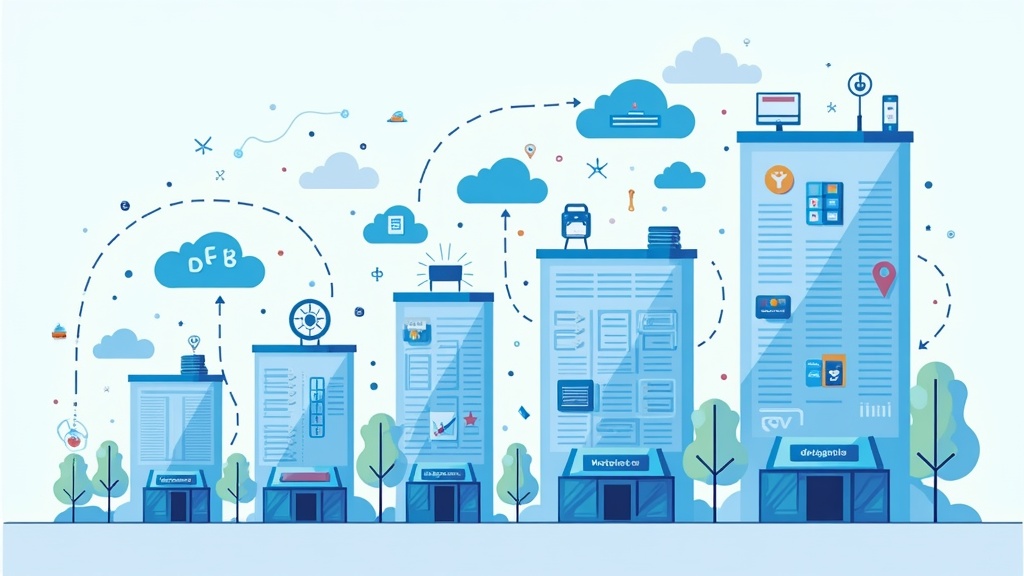Small businesses often feel like they’re in a constant race to keep up with larger competitors. Big brands usually have more resources and can afford huge marketing budgets, advanced data tools, and custom built apps that give them an edge. Today, AI tools are leveling the playing field. With the right technology, I’ve found that even a two person shop can automate tasks, improve marketing, and make smarter decisions without spending a fortune. In this article, I’m going to share how AI tools can help your small business compete with much bigger names.

Table of Contents
- Why AI is Giving Small Businesses a Chance
- Essential AI Tools Every Small Business Should Know About
- Getting Started: Steps to Take When Introducing AI Tools
- Things That Matter Before Choosing AI Tools
- Some Common Challenges and How to Tackle Them
- Advanced Tips for Getting More from Your AI Toolkit
- Frequently Asked Questions
- The Takeaway for Small Businesses Competing With Big Brands
Why AI is Giving Small Businesses a Chance
The fast growth of AI in the last few years has made advanced technology much more available. Businesses of any size can now use software that was once only available to large corporations. From chatbots to intelligent analytics, these tools can help small businesses stand out, work faster, and connect with customers more personally.
Using AI isn’t about making work harder or replacing your team. It’s about helping you do things faster and smarter, whether it’s finding new leads, handling support questions, or understanding your sales trends. According to a recent survey by Salesforce, over half of small businesses using AI say it helps them offer better customer experiences. That’s a real advantage when you’re going up against bigger brands.
Today, I can easily access tools for scheduling posts, answering customer questions all day, or even writing product descriptions. This is a game changer for anyone who used to spend nights catching up on admin tasks. With more time available, small teams can focus on innovation, brainstorming new ways to reach their customers, and boosting their bottom line. AI also cuts down on errors by automating repetitive work, which reduces costly mistakes.
Essential AI Tools Every Small Business Should Know About
AI tools come in many forms. Some help with marketing, others with sales, support, or operations. Here are some kinds of AI tools that I’ve seen make a real difference for small businesses:
- Chatbots for Customer Service: Chatbots, like those from Intercom or Tidio, can handle common questions 24/7. Customers get immediate answers, and your team can focus on more complex issues.
- Email Marketing Automation: Tools such as Mailchimp and GetResponse use AI to create, schedule, and optimize email campaigns. AI suggests the best times to send, recommends subject lines, and can personalize messages.
- Social Media Management: Platforms like Buffer or Later use AI to suggest the best times to post and even generate suggested captions or hashtags to help you reach more people.
- Sales Insights and Forecasting: Software such as HubSpot or Pipedrive uses AI to track leads, forecast sales, and suggest which deals are most likely to close.
- Image and Content Creation: Tools like Canva now use AI to help generate unique graphics, resize images for each platform, and even suggest content that fits your audience.
Additionally, there are AI driven voice assistants for booking appointments, automated inventory management tools to keep your products in stock, and financial apps that can analyze spending or spot billing errors in real time. Each of these categories can save small businesses countless hours and lead to better customer satisfaction.
Getting Started: Steps to Take When Introducing AI Tools
It may seem like a lot to add AI to your daily routine, but I’ve found that starting small can have the biggest impact. Here’s an easy roadmap for small business owners who want to try out AI for the first time.
- Identify Your Biggest Time Drains: Make a list of routine tasks that eat up your time, such as replying to common emails or posting on social media. These are usually the simplest things to automate.
- Choose a Single Tool to Start: Avoid signing up for several services at once. Pick one AI tool that addresses your main headache and spend time learning it.
- Integrate the Tool into Your Workflow: AI works best when it’s part of your daily routine. Add a chatbot to your website or use email automation to keep in touch with customers.
- Track What Changes: Keep an eye on how much time you’re saving or whether your customer engagement improves. Most tools have built in analytics to help you see the difference.
- Ask for Feedback: Gather feedback from your customers or team. If something isn’t working as expected, tweak your setup or try another tool.
Starting with a single, well chosen tool allows you to get comfortable with AI. Once you’ve seen the impact, bringing in more advanced options gets much easier and less intimidating.
Things That Matter Before Choosing AI Tools
Bringing an AI tool into your business is a step you want to think through. Here are a few things that I always check before signing up:
- Price: Costs can vary. Many tools offer free versions or trials, but some can get pricey as your needs grow. Take the time to see what’s included in each plan.
- Ease of Use: Some AI tools have a steep learning curve. I always look for simple dashboards, clear instructions, and good customer support.
- Integration: It’s really important that your new tool works with existing systems. For example, check if email marketing software connects to your website or CRM system.
- Data Privacy: Any software that uses AI will need access to your customer data. Make sure you’re comfortable with how your information will be stored and used. Always go for trusted, well reviewed services.
Don’t forget to look at any reviews or case studies from similar businesses in your industry. Real feedback can clue you in on potential limitations or features that could be a game changer for your business.
Examples of How AI Tools Are Helping Small Businesses Win
Real life stories can help you see what’s possible. Here are three ways I’ve seen small businesses use AI tools to outperform their larger competitors:
- Personalized Customer Experience: An online clothing shop uses AI chatbots to guide shoppers to their right size and style in real time. Customers get answers quickly, just like on the big brands’ sites, which leads to more sales.
- Smarter Ad Spending: A local pet store uses AI driven social ad tools that test dozens of ad versions automatically. The software finds the winning ad, saving money and increasing store visits.
- Faster Content Creation: A startup tea brand needed product descriptions for over 100 products. An AI writing tool generated the first drafts, and the team finished editing them in a day instead of a week.
There are thousands of similar examples today, from bakeries streamlining delivery logistics to coaches using AI analysis for personalized training. These stories show how AI can deliver quick wins and steady growth for businesses of any type.
Some Common Challenges and How to Tackle Them
AI can sound really technical, but I’ve learned most tools are built for everyday users. Still, a few challenges come up for small business owners:
- Not Always Perfect: AI is smart, but it’s not human. Sometimes chatbots or content tools get things wrong. Always double check important messages or brush up auto generated answers to keep your brand voice strong.
- Over Automation: Too much automation can make your business feel less personal. I find it best to automate the basics but jump in personally for complicated or sensitive customer needs.
- Learning Curve: Even simple AI tools take time to learn. Budget a few hours for setup, and look for video tutorials or support forums if you get stuck.
- Tech Glitches: Sometimes updates or integrations cause hiccups. Keeping software updated and following help desk advice helps keep things running smoothly.
Taking a few extra minutes to personalize your automated messages, or periodically reviewing your AI tools’ performance, helps prevent these issues from piling up. Stay curious, and don’t hesitate to test new solutions as your needs change.
How to Get Help If You’re Stuck
Most AI tools for small business offer customer support, whether through live chat, email, or help guides. I rely on user communities and video walkthroughs when I get stuck. There’s a big community of small business owners experimenting with these tools, and I’ve always found someone who’s been through the same thing before.
Advanced Tips for Getting More from Your AI Toolkit
Once the basics are handled, there are ways to unlock even more from your AI tools. Here’s how I maximize the benefits:
- Connect Different Tools: Use platforms like Zapier to link your email, ecommerce, and customer support tools so data flows smoothly.
- Keep Testing: Most tools offer A/B testing, so you can try different messages or images and find what works best for your audience.
- Review Analytics Regularly: AI tools collect data on what’s working and what isn’t. I review reports at least once a month to spot trends and adjust quickly.
- Update Your Goals Often: As your business grows, your priorities may change. AI tools are constantly updating with new features, so revisit your setup regularly to make the most of what’s available.
With a little curiosity and some testing, even the smallest business can uncover powerful new ways to connect with customers and run more efficiently.
Frequently Asked Questions
I’ve rounded up some questions small business owners often ask when thinking about using AI tools.
Question: Are AI tools too expensive for my business?
Answer: Many AI tools start free or offer affordable plans for small businesses. Costs can scale, but you can get started without a big investment.
Question: Do I need technical skills to use AI?
Answer: Most AI tools are designed for people without a technical background. Look for companies with clear instructions and good support.
Question: How secure is my business and customer data?
Answer: Reputable providers use strong security measures. Always read the privacy policy before sharing sensitive information and choose trusted vendors.
Question: Which tasks should I automate first?
Answer: Start with the most repetitive or time consuming jobs, like answering standard emails or scheduling social posts. See what makes the biggest difference and build from there.
If you are ready to lighten your workload, improve the customer experience, and compete more effectively with larger companies, now is the time to take the next step. Start by choosing one AI tool that solves a real problem in your business and begin exploring what it can do. Small improvements add up quickly, and the sooner you get started, the faster you will see results. Take action today and begin building a smarter, more efficient business powered by AI.
The Takeaway for Small Businesses Competing With Big Brands
AI tools are helping small businesses do more with less. By automating everyday tasks and getting smarter with data, I’ve been able to serve my customers better and spend more time growing my business. The technology is easier to use than most people expect, and there’s a tool out there for almost any need. If you want to compete with the big brands, AI gives you a real shot. Now is the perfect time to track down the right AI solutions and set your business up for greater success, no matter your size.
About Jim
Jim is the creator of AIMediaMinds.com, where he explores the fascinating world of Artificial Intelligence alongside his readers. A lifelong learner and tech enthusiast, Jim is passionate about making AI accessible and understandable for everyone. Connect with Jim as he shares his journey and insights into the ever-evolving AI landscape.
